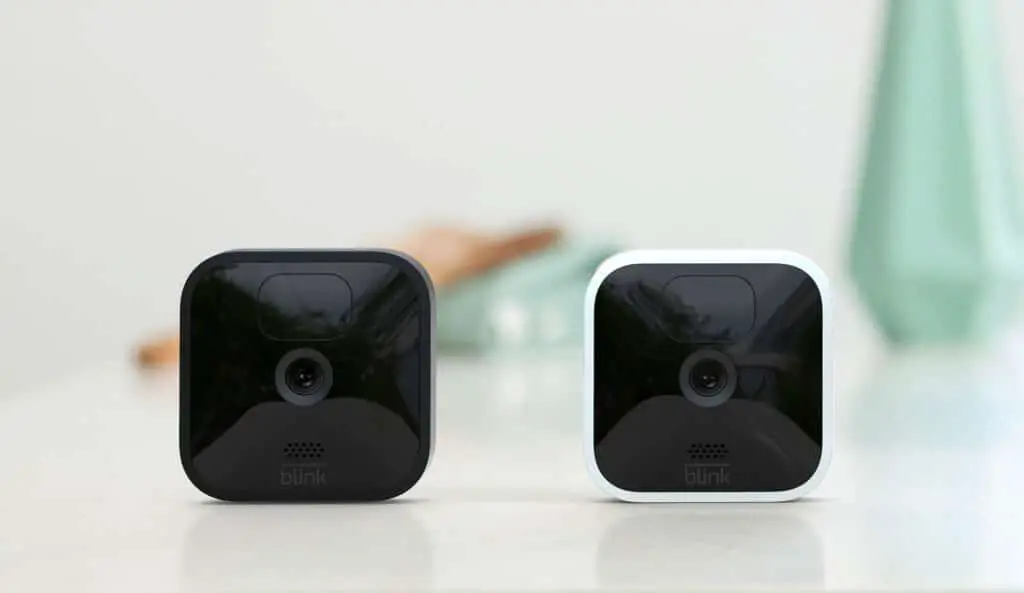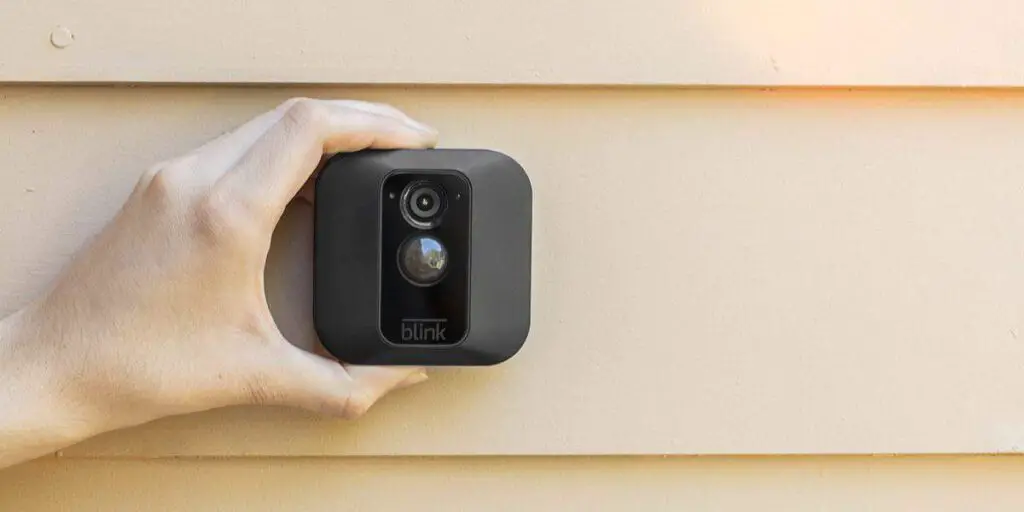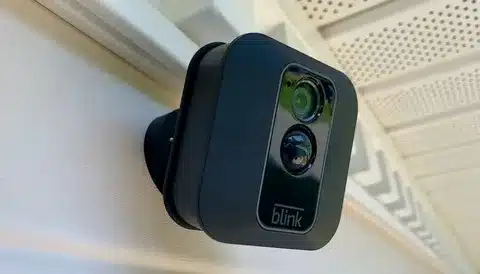Introduction
How To Make Blink Camera Faster: The Blink Camera series has garnered significant attention due to its wireless convenience, ease of installation, and reliable functionality. However, like any electronic device, the Blink Camera is not immune to occasional performance bottlenecks that might hinder its effectiveness. This guide aims to provide practical insights and strategies to make your Blink Camera faster and more responsive, ensuring a seamless home surveillance experience.
Blink Camera and delve into troubleshooting methods to rectify these issues effectively. From optimizing your Wi-Fi network and camera placement to updating firmware and employing third-party applications, we will cover a range of techniques to elevate the performance of your Blink Camera. Understanding the common causes of lag and delays in Blink Camera operation is crucial to implementing the appropriate solutions.
The interplay between hardware capabilities, network connectivity, and software configurations, users can take informed steps towards maximizing the potential of their Blink Camera devices. As neglecting these aspects can lead to suboptimal camera performance and potential security vulnerabilities. Armed with this knowledge, Blink Camera users can establish a robust and efficient surveillance system that provides timely alerts, swift video playback, and real-time monitoring capabilities.

How can I make my blink camera faster?
Please check if your devices camera and Sync Module are updated to latest software and firmware versions. Check your Wi-Fi and Sync Module signal strength. Cameras should maintain 3 bar signal strength to Sync Module and Wi-Fi network. Please note: Blink requires 2Mbps upload speed and supports 2.4ghz bandwidth.
Strengthen Wi-Fi Connection
A strong and stable Wi-Fi connection is crucial for optimal camera performance. Ensure that your camera is within range of a reliable Wi-Fi signal. Consider moving your router closer to the camera or using Wi-Fi range extenders if needed.
Camera Placement
Position your Blink Camera strategically to reduce interference and obstructions. Avoid placing the camera near large metal objects or dense walls that can weaken the Wi-Fi signal.
Firmware Updates
Regularly check for and install firmware updates provided by the manufacturer. These updates often include performance improvements and bug fixes that can enhance the camera’s functionality.
Motion Detection Settings
Adjust the motion detection sensitivity to suit your needs. Lower sensitivity levels can prevent unnecessary recordings and notifications, potentially speeding up the camera’s response to real threats.
Why does blink camera take so long?
There is a delay from the end of a motion clip to the start of the camera capturing a new motion clip. This delay is known as Retrigger Time and prevents the camera from sending too many motion notifications during motion triggers.
Internet Connection Issues
One of the primary reasons for delays is a weak or unstable internet connection. If the camera’s Wi-Fi signal is weak or intermittent, it can result in slow response times and delayed video transmissions.
High Network Traffic
Multiple devices on the same Wi-Fi network, especially those using bandwidth-intensive apps, might generate network congestion and slow Blink Camera communication with the server.
Motion Detection Sensitivity
If the motion detection sensitivity is set too high, the camera may trigger unnecessary recordings frequently, causing delays in processing and uploading video clips.
Firmware and Software Updates
Outdated firmware or software can lead to performance issues. Regularly updating the camera’s firmware and the Blink app is essential to ensure optimal performance and access to the latest improvements and bug fixes.
Camera Placement
Incorrect camera placement can impact performance. Placing the camera too far from the Wi-Fi router or in areas with obstacles and interference can affect the signal strength and result in slower response times.
Why are my Blink cameras so slow?
A lot of factors can hinder your otherwise sufficient upload speeds. These include placing the router too far away from your Blink camera system and having certain objects such as a wall between your router and camera(s).
Weak Wi-Fi Signal
One of the most common reasons for slow Blink cameras is a weak Wi-Fi signal. If the cameras are located far from the Wi-Fi router or there are physical obstacles between the camera and the router (e.g., walls, large objects), it can result in a poor connection and slow response times.
Network Congestion
If your Wi-Fi network is handling multiple devices or experiencing heavy traffic, it can lead to network congestion, causing delays in camera communication and video transmission.
Internet Speed
Slow internet speed from your Internet Service Provider (ISP) can hinder the performance of your Blink cameras. Insufficient bandwidth may lead to buffering issues and delayed access to live feeds and recorded footage.
Firmware and App Updates
Outdated firmware on the cameras or an older version of the Blink app can result in performance issues. Ensure that your cameras and app are up-to-date to access the latest optimizations and bug fixes.

How can I boost my Blink camera signal?
One solution, other than moving the camera closer to the Wi-Fi router, is to install a Wi-Fi extender or booster. A newer, more effective solution is called mesh Wi-Fi. A Wi-Fi extender repeats the wireless signal from your router to expand its coverage.
Positioning the Wi-Fi Router
Place your Wi-Fi router in a central location in your home to maximize coverage. Avoid placing it in corners or behind large obstructions, as this can limit the signal’s reach.
Use Wi-Fi Range Extenders/Boosters
Wi-Fi range extenders or boosters can amplify your existing Wi-Fi signal and extend its range. Place them strategically between the router and the Blink cameras to improve signal strength.
Upgrade to a Mesh Wi-Fi System
Consider upgrading to a mesh Wi-Fi system that uses multiple access points to create a seamless network. This can eliminate Wi-Fi dead zones and provide strong coverage throughout your home.
Limit Interference
Minimize interference by keeping the Wi-Fi router away from electronic devices that may cause signal disruption, such as cordless phones, microwaves, and Bluetooth devices.
Check Channel Congestion
Use a Wi-Fi analyzer app to check for channel congestion. If your Wi-Fi router is operating on a crowded channel, switch to a less crowded one to reduce interference.
Adjust Camera Placement
Ensure that your Blink cameras are placed within a reasonable distance from the Wi-Fi router and away from thick walls or large metal objects that can block the signal.
How do I fix my blink camera delay?
Try to power cycle your Sync Module by simply unplug the Sync Module from power and plug it back in. Check if this helps. If power cycle does not help, try to soft reset the Sync Module. Press the Reset button once to put the Sync Module into “pairing mode”, let the devices connect and check if that helps.
Check Internet Connection: Ensure that your Blink camera is connected to a strong and stable Wi-Fi network. A weak or unstable connection can cause delays in video transmission and response times. Consider moving the camera closer to the Wi-Fi router or using Wi-Fi range extenders to improve signal strength.
Update Firmware and App: Make sure your Blink camera’s firmware and the Blink app are up-to-date. Manufacturers frequently release updates to optimize performance and address potential issues.
Adjust Motion Detection Sensitivity: High motion detection sensitivity can lead to frequent false alerts, causing delays in processing and recording. Lower the sensitivity level to avoid unnecessary triggers.
Optimize Camera Placement: Ensure that your Blink camera is strategically positioned to have a clear line of sight to the areas you want to monitor. Avoid placing it near large objects or walls that may interfere with the Wi-Fi signal.
Review Cloud Storage: If your Blink camera uses cloud storage, check your subscription plan to ensure you have adequate storage space. A full cloud storage can lead to delays in recording and accessing new footage.
What internet speed do you need for Blink cameras?
Upload speed – The Blink system requires a consistent minimum upload speed of 2Mbps. Any result lower than 2Mbps can cause latency and/or issues establishing or maintaining connection. Network congestion – The more devices in your home use Wi-Fi, the more they will be sharing your network’s bandwidth.
For these cameras, a minimum upload and download speed of 1 Mbps (megabit per second) is recommended. This speed is sufficient for streaming live video in standard definition.
For Blink XT2 cameras, a higher internet speed is required due to the higher resolution of HD video. A minimum upload and download speed of 2 Mbps is recommended to ensure smooth streaming and video playback.
Having higher speeds will generally result in a better experience with your Blink cameras. If you have multiple cameras or other devices using the same internet connection, you may need higher speeds to accommodate the increased data traffic.
Factors such as network congestion, distance from the Wi-Fi router, and the number of connected devices can also affect the camera’s performance. Therefore, it’s advisable to have a higher internet speed than the minimum recommended to account for these variables and ensure a reliable connection for your Blink cameras.
If your Blink camera model supports it, consider using local storage options like USB drives or external storage devices. Local storage can potentially reduce delays associated with cloud uploads and downloads.
Can Blink record more than 10 seconds?
With Blink’s Instant-On technology, recording starts within a fraction of a second, so you get a clear look at who or what triggered the alert. How long can I set the camera to record for? Clip length can differ among cameras. Most can be set between 5 and 60 seconds.
However, Blink offers a feature called “End Clip Early” that allows you to adjust the recording duration. With this feature enabled, the camera will stop recording once the motion stops, rather than continuing for the full 10 seconds. Enabling “End Clip Early” can help conserve battery life and cloud storage space, especially if the motion event is brief.
While the default recording duration is limited to 10 seconds, Blink offers cloud storage plans with different levels of storage capacity, which can impact the number of clips you can store. The free Basic plan typically retains clips for up to 7 days, while subscription plans, such as the Plus or Premium plans, offer longer storage durations and additional features.
If your Wi-Fi router has detachable antennas, consider upgrading to high-gain antennas. These can provide a more focused and stronger signal in specific directions. Regularly update your Blink camera’s firmware and the Blink app. Manufacturers often release updates that can improve Wi-Fi connectivity and overall performance.
If possible, use the provided Sync Module 2 with a wired Ethernet connection for your Blink XT2 and Blink Indoor cameras. A wired connection can provide more reliable communication compared to Wi-Fi.
How can I improve the Wi-Fi signal for my Blink camera?
Place your Wi-Fi router in a central location in your home to maximize coverage. Avoid placing it near thick walls, large metal objects, or electronic appliances that may interfere with the signal.
Wi-Fi range extenders or boosters can amplify the existing Wi-Fi signal and extend its range. Place them strategically between the router and the Blink camera to improve signal strength.
Consider upgrading to a mesh Wi-Fi system that uses multiple access points to create a seamless network. This can eliminate Wi-Fi dead zones and provide strong coverage throughout your home.
Minimize interference by keeping the Wi-Fi router away from devices that may cause signal disruption, such as cordless phones, microwaves, and Bluetooth devices. Use a Wi-Fi analyzer app to check for channel congestion. If your Wi-Fi router is operating on a crowded channel, switch to a less crowded one to reduce interference.
Ensure that your Blink camera is positioned within a reasonable distance from the Wi-Fi router and away from obstructions. Placing it in an optimal location can improve signal strength. If your Wi-Fi router has detachable antennas, consider upgrading to high-gain antennas. These can provide a more focused and stronger signal in specific directions.
What internet speed do I need for optimal Blink camera performance?
Regularly update your Wi-Fi router’s firmware and the Blink app. Manufacturers often release updates to optimize performance and address potential issues.
For these cameras, a minimum upload and download speed of 1 Mbps (megabit per second) is recommended. This speed is sufficient for streaming live video in standard definition. A minimum upload and download speed of 2 Mbps is recommended to ensure smooth streaming and video playback.
Are minimum recommended speeds, and having higher speeds will generally result in a better experience with your Blink cameras. If you have multiple cameras or other devices using the same internet connection, you may need higher speeds to accommodate the increased data traffic.
Factors such as network congestion, distance from the Wi-Fi router, and the number of connected devices can also affect the camera’s performance. Therefore, having a higher internet speed than the minimum recommended can help ensure a reliable connection and smooth operation of your Blink cameras.
If you experience buffering, delays in video playback, or other performance issues, consider upgrading your internet plan or optimizing your Wi-Fi network to provide a better experience with your Blink cameras. If your Wi-Fi router has detachable antennas, consider upgrading to high-gain antennas.
Try power cycling your Wi-Fi router by unplugging it and plugging it back in. This can refresh the router’s connection and resolve temporary issues. These can provide a more focused and stronger signal in specific directions.

Conclusion
First and foremost, prioritizing a robust Wi-Fi network and ensuring a strong and stable connection between the camera and the router lays the foundation for smoother camera operation. Proper camera placement is equally essential, as it directly impacts the quality of signal reception and minimizes interference. Blink Camera can be the difference between capturing critical moments and facing unforeseen challenges. By following the guidelines and best practices provided in this guide, users can unleash the full potential of their Blink Cameras.
Frequent firmware updates are key to staying on top of the latest improvements and bug fixes provided by the manufacturer. These updates can significantly enhance camera performance and security, keeping potential vulnerabilities at bay. Furthermore, utilizing third-party applications and integrations can expand the functionality of the Blink Camera, providing additional features and customization options that contribute to a more personalized and user-friendly experience.
Consistent maintenance, including regular cleaning of camera lenses and monitoring device health, can ensure optimal performance over time. Ultimately, the effort invested in making the Blink Camera faster translates into a heightened sense of security, as users can rely on real-time alerts, swift video playback, and seamless monitoring of their property.

